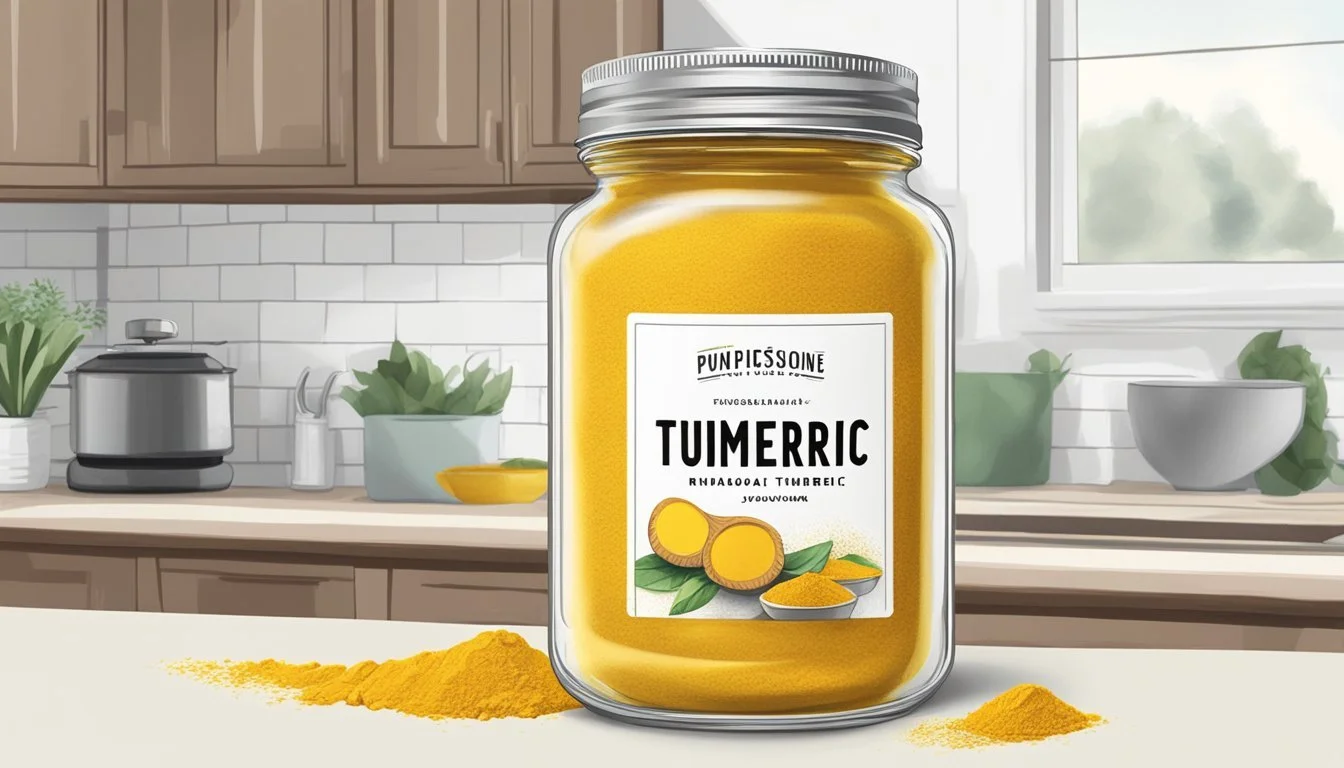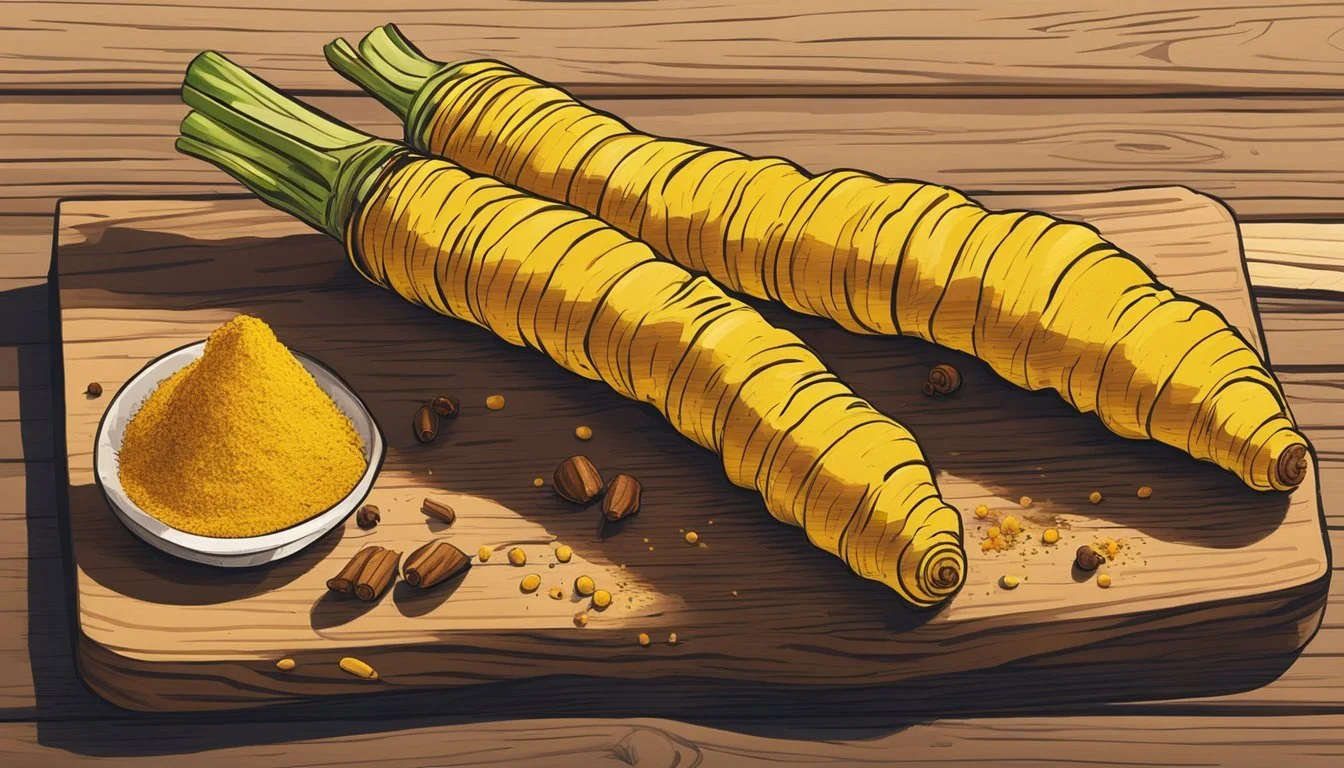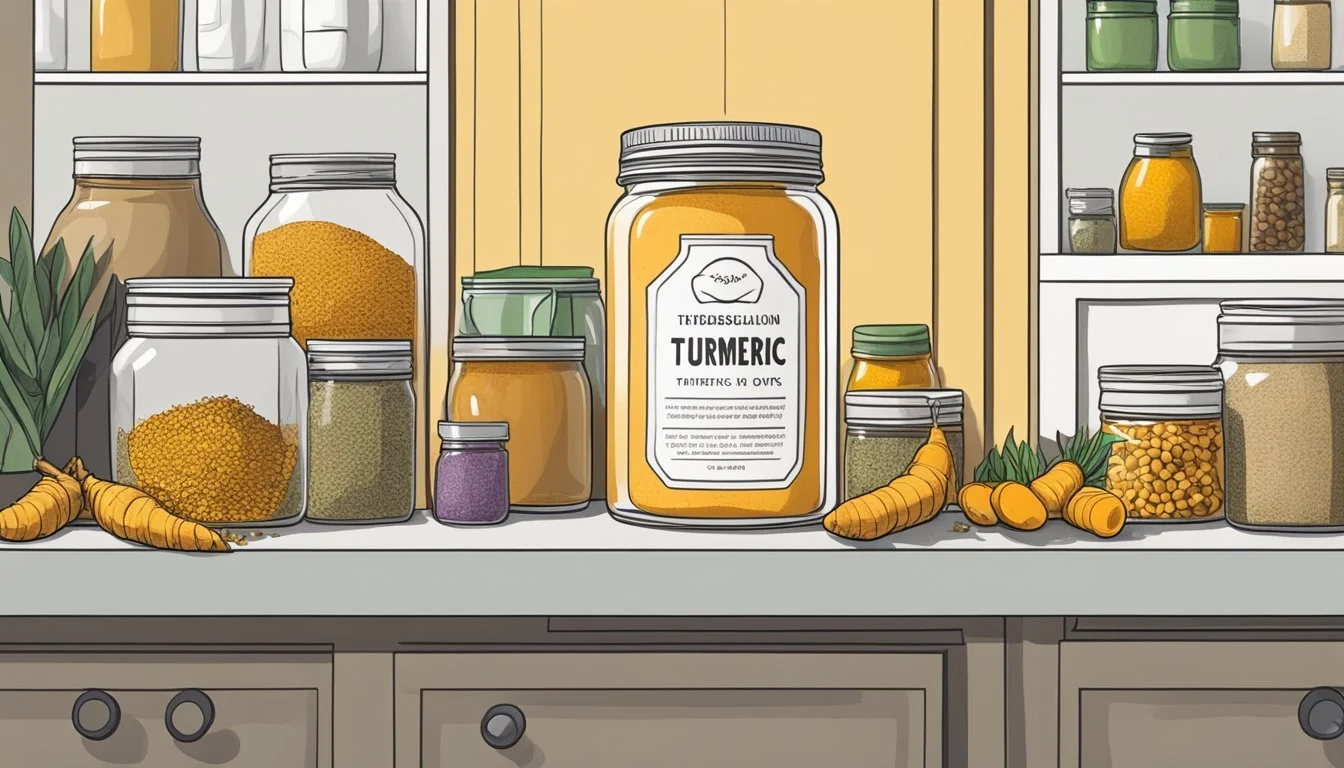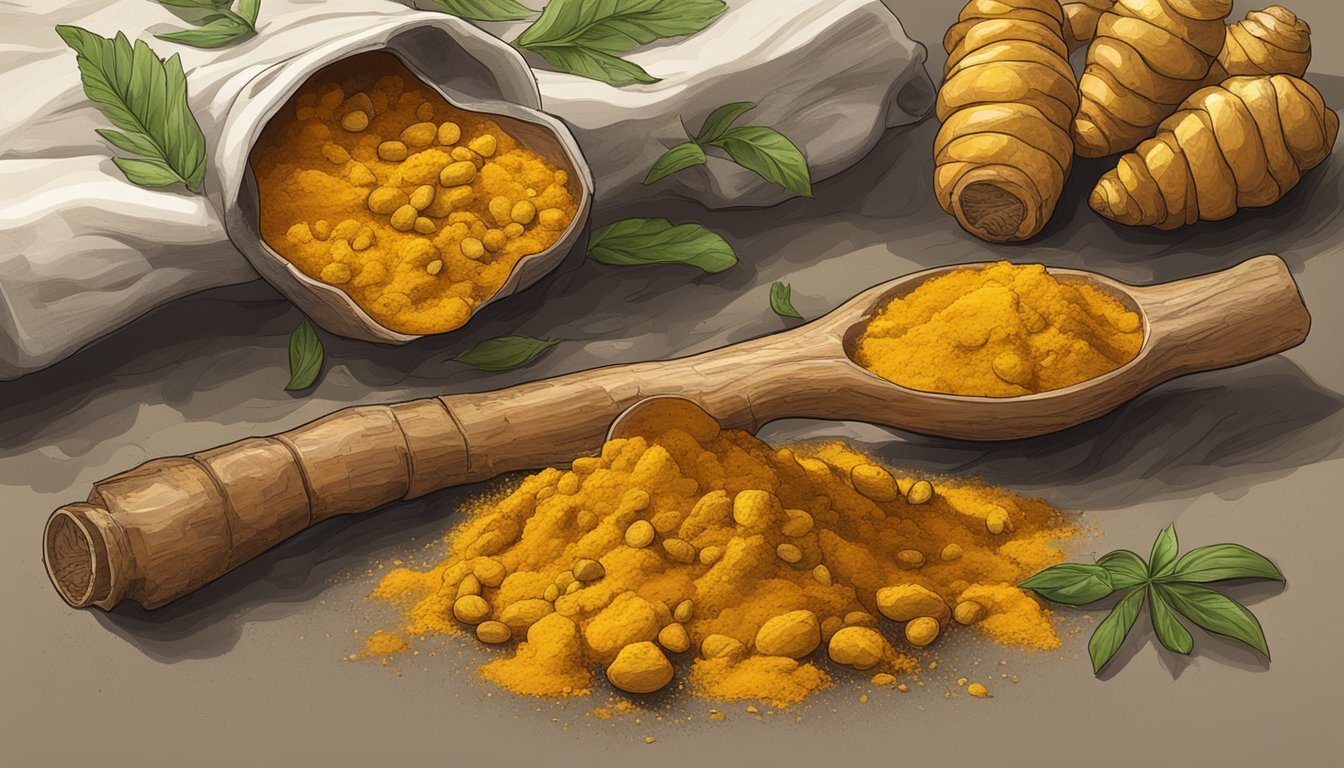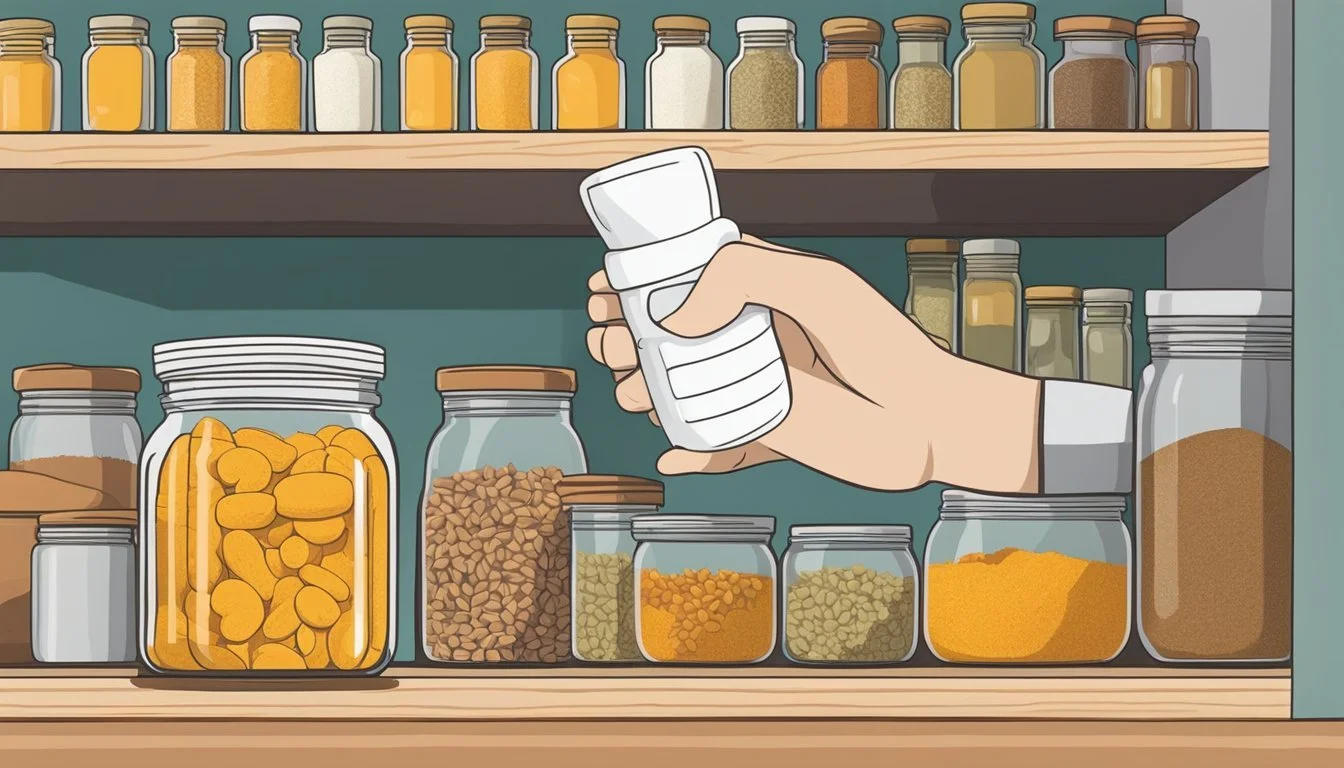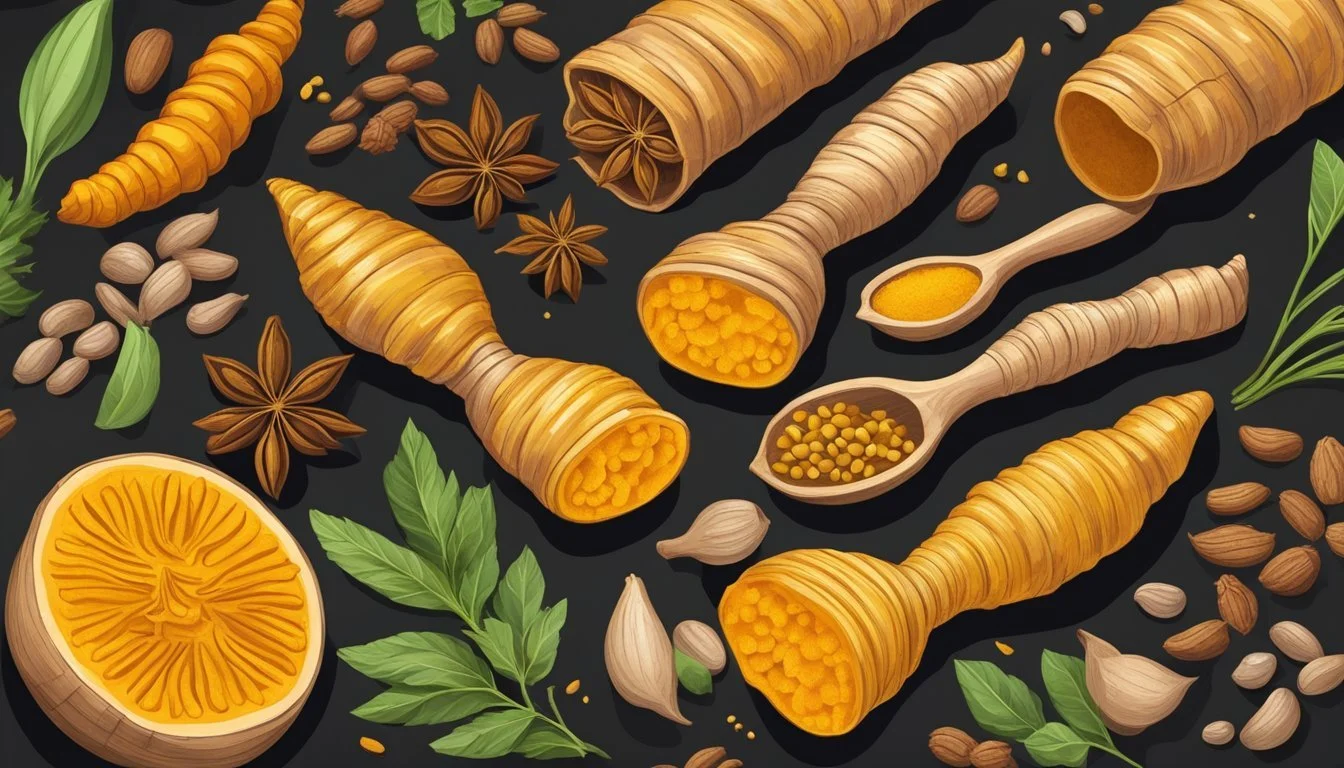Does Turmeric Go Bad?
Storage Tips and Shelf Life
Turmeric, a staple spice in many kitchens, is renowned for its vibrant color and numerous health benefits, including its anti-inflammatory and antioxidant properties. Though it doesn't "go bad" in the traditional sense of becoming unsafe to consume, its quality and potency can degrade over time. Turmeric typically lasts for about 2-3 years if stored properly, but its flavor and effectiveness may begin to decline after around six months.
The shelf life of turmeric varies depending on its form. Turmeric powder can maintain its quality for a couple of years when kept in a cool, dark place. Fresh turmeric root, on the other hand, has a shorter shelf life, lasting only 2-3 weeks in the refrigerator or up to six months when frozen. Proper storage is key to preserving the spice's freshness and health properties.
Recognizing expired turmeric involves checking for a loss of its vibrant color, aroma, and potent flavor. While using expired turmeric is unlikely to make you sick, it won't deliver the full benefits that fresh turmeric offers. By ensuring optimal storage conditions, you can enjoy the maximum health advantages and culinary richness that this versatile spice brings.
Understanding Turmeric
Turmeric is a versatile spice known for its vibrant color, distinct flavor, and wide-ranging health benefits. It has been a staple in both culinary and medicinal practices for centuries, particularly in Southeast Asia.
Culinary Uses
Turmeric is a key ingredient in many dishes across the globe, notably in Indian and Southeast Asian cuisines. Its warm, slightly bitter flavor enhances curries, soups, and stews. Turmeric is often used in powder form but can also be found fresh. A pinch can transform the color of a dish to a rich golden-yellow, adding visual appeal. It is also popular in marinades and as a seasoning for vegetables and meat.
Health and Nutrition
Turmeric's primary active compound, curcumin, is renowned for its anti-inflammatory and antioxidant properties. It is widely used in traditional medicine to treat a range of ailments such as digestive issues, skin conditions, and joint pain. Studies suggest that curcumin can help reduce the risk of chronic diseases like heart disease and cancer when incorporated into a balanced diet. Turmeric also boosts the immune system and supports overall health.
Botanical Profile
Turmeric is a flowering plant, Curcuma longa, belonging to the ginger family, Zingiberaceae. The plant thrives in warm, humid climates such as those found in India and Southeast Asia. It reaches about 1 meter in height and has large, oblong leaves. The rhizome, or underground stem, is harvested and used to make the turmeric spice. Upon drying and grinding, it yields a potent, vibrant powder known for its distinctive aroma and color.
Types of Turmeric
There are several varieties of turmeric, each with unique attributes. Lakadong turmeric, known for its high curcumin content, offers potent health benefits and a robust flavor. Alleppey turmeric, also from India, is prized for its deep color and strong aroma. Madras turmeric has a lighter yellow hue and milder flavor, making it suitable for a variety of culinary applications. Understanding the differences helps in selecting the right type for specific needs.
By exploring these facets of turmeric, one gains a comprehensive appreciation for this remarkable spice.
Determinants of Shelf Life
The shelf life of turmeric is influenced by several factors, primarily the packaging and storage environment. Understanding these elements helps maintain the quality, potency, and usability of turmeric over time.
Role of Packaging
Packaging plays a crucial role in preserving the shelf life of turmeric. Properly sealed containers prevent exposure to air, which can lead to oxidation and quality loss. Opaque packaging is recommended to shield turmeric from light, which can degrade its vibrant color and potency.
Using airtight containers reduces moisture infiltration, keeping turmeric dry and potent. Vacuum-sealed packages are particularly effective as they minimize air contact. Investing in high-quality packaging ensures that turmeric retains its flavor, aroma, and benefits for a longer period.
Impact of Storage Environment
Storage conditions significantly impact turmeric's shelf life. Cool, dry places are ideal as they prevent moisture buildup, which can cause caking or spoilage. Avoiding heat is essential, as high temperatures accelerate the degradation of turmeric's active compounds.
Humidity control is vital; excessive moisture can lead to mold growth. Using desiccants or placing turmeric in moisture-absorbing sachets can help. Proper ventilation also keeps the environment stable and prevents the accumulation of heat and moisture, thus preserving the quality and shelf life of turmeric.
In both subsections, minimizing exposure to air, light, and moisture while maintaining stable temperatures are key strategies for extending the shelf life of turmeric. By focusing on these factors, individuals can ensure their turmeric remains fresh and effective for as long as possible.
Proper Storage Practices
To ensure turmeric maintains its quality, potency, and flavor, it is essential to store it correctly. Proper storage involves using airtight containers, keeping it in a cool and dark place, and minimizing exposure to moisture and heat.
Storing Ground Turmeric
Ground turmeric should be stored in airtight containers to prevent exposure to air, which can lead to loss of flavor and potency.
A cool and dark place such as a pantry or cupboard is ideal for storing ground turmeric.
Avoid placing the container near sources of heat like stoves or ovens, as heat can degrade the turmeric over time.
Minimize moisture exposure by keeping the container tightly sealed to avoid condensation, which can cause clumping and spoilage.
Using glass or high-quality plastic containers with tight-fitting lids is recommended.
Storing Fresh Turmeric Root
Fresh turmeric root has a much shorter shelf life compared to ground turmeric. It should be stored in the refrigerator to keep it fresh for 2-3 weeks.
For longer storage, freezing is an effective option. When frozen, fresh turmeric root can last up to six months.
Wrap the roots tightly in plastic wrap or place them in a freezer-safe container to prevent freezer burn and condensation.
To use, simply grate the amount needed while the root is still frozen, then return the rest to the freezer.
Avoid leaving fresh turmeric root at room temperature for extended periods, as it accelerates spoilage.
Maximizing Potency Over Time
Store turmeric in an airtight container to prevent exposure to air, which can lead to oxidation and loss of potency.
Keep the container in a cool, dark place to protect it from heat and light, both of which can degrade the quality over time.
Ensure minimal moisture exposure by using containers with tight-fitting lids. Moisture can cause mold growth and spoil the turmeric.
For ground turmeric, consider using small containers so the spice is depleted more quickly, reducing the time it spends exposed to air each time the container is opened.
Regularly check for any signs of spoilage, such as changes in color, clumping, or off odors, and discard if necessary.
Identifying Spoiled Turmeric
To ensure turmeric retains its flavor and medicinal properties, it is crucial to identify spoiled turmeric promptly. This section covers visual signs, smell and taste tests, and potential health implications of using expired turmeric.
Visual Inspection
Visual changes are often the first indicators of spoiled turmeric. Fresh turmeric powder should have a vibrant, golden-yellow color. A faded or dull appearance suggests deterioration. Discoloration can also indicate the presence of mold or contaminants. Ground turmeric with dark spots should be discarded immediately.
Fresh turmeric root should be firm and free of mold. Soft or shriveled roots signify spoilage. Always inspect the turmeric closely under good lighting conditions to ensure quality.
Olfactory and Taste Test
Turmeric's aroma and taste are reliable indicators of freshness. High-quality turmeric emits a strong, earthy smell. If the turmeric powder has lost its distinct aroma, it is likely spoiled. Expired turmeric often has a faint or musty odor.
Tasting a small amount can also help in assessment. Fresh turmeric has a bold, slightly bitter taste. If the turmeric tastes flat or lacks intensity, it's no longer suitable for use. Always conduct these tests carefully to ensure safety.
Health Implications of Using Spoiled Turmeric
Consuming spoiled turmeric can pose health risks. Although it may not lead to serious illness, it can cause digestive discomfort. The presence of mold in turmeric can introduce harmful toxins into the body. Expired turmeric loses its beneficial properties, making it less effective for medicinal purposes.
Continued use of deteriorated turmeric can diminish its flavor and health benefits. Always opt for fresh turmeric to ensure its efficacy in both culinary and health applications. If in doubt, it is safer to discard questionable turmeric to avoid potential health issues.
Extending Shelf Life and Usage
Proper storage and mindful usage are vital to maintaining turmeric's peak quality. By repackaging for longevity, utilizing freezing methods, and following best usage practices, you can ensure your turmeric stays fresh and potent.
Repackaging for Longevity
Turmeric's shelf life can be significantly extended by storing it in an airtight container. Exposure to air, light, and moisture can degrade its quality, so it's advisable to use opaque, tightly sealed containers.
Glass jars with rubber gaskets are excellent options, as they prevent moisture ingress. By keeping turmeric in a cool, dry place, its freshness can be preserved effectively, sometimes even beyond the expiration date. Regularly check for any loss of potency, indicated by diminished aroma or faded color.
The Freezing Option
For those wanting to extend fresh turmeric root's shelf life, freezing is an effective method. When refrigerated, fresh turmeric lasts 2-3 weeks, but when frozen, it can last up to 6 months.
Freeze turmeric root by first peeling and grating or chopping it into smaller pieces. Pack these pieces into airtight containers or vacuum-sealed bags before placing them in the freezer. This helps retain both the flavor and potency. For easy usage, portion the turmeric in small, usable amounts before freezing.
Best Practices in Usage
To ensure turmeric remains effective, adhere to best usage practices. Using a clean, dry spoon each time you scoop out turmeric helps avoid introducing moisture and contaminants. Testing freshness is straightforward: if the turmeric has lost its vibrant color or strong aroma, consider replacing it.
In cooking, adding turmeric early in the cooking process allows its flavors to integrate well with other ingredients. Additionally, store turmeric in a dark, cool, and dry place for peak quality. When using frozen turmeric, there's no need to thaw; directly add it to your dishes for convenience and maintained potency.
Culinary and Alternative Uses
Turmeric is a versatile spice that plays a prominent role in both culinary applications and alternative uses. Its unique flavor and aroma enhance various dishes, while its properties allow for broader applications beyond the kitchen.
Infusing Flavors in Dishes
In cooking, turmeric is a staple in curries, soups, and stews, where it imparts a warm, slightly bitter taste and a vibrant yellow color. It's often paired with other spices like ginger, cumin, and coriander to create rich and complex flavor profiles.
For beverages, golden milk — a soothing drink made with milk, turmeric, black pepper, and other spices — is a popular choice. Turmeric can also be used in smoothies for an added health boost and flavor enhancement. It’s essential to add black pepper when cooking with turmeric, as it increases the absorption of curcumin, the active compound in turmeric.
Turmeric in Non-Culinary Contexts
Beyond the kitchen, turmeric has various non-culinary uses. In skincare, its anti-inflammatory and antioxidant properties make it a popular ingredient in face masks and creams meant to reduce redness and enhance skin tone.
In traditional medicine, turmeric is used for its potential therapeutic benefits, such as aiding digestion and alleviating pain. Moreover, it plays a role in dental care, where it's used in some natural toothpaste formulations to promote oral health.
Pairing with Other Ingredients
Turmeric pairs well with an array of ingredients, enriching their flavors and providing a harmonious balance. Common pairings include ginger, cumin, coriander, and salt. Each of these complements turmeric's robust flavor, making it a versatile choice for many recipes.
In addition to spices, turmeric works well with vegetables and proteins in curries and stews. For a delicious twist, it can be added to roasted vegetables or incorporated into marinades for meats and tofu. Its compatibility with both sweet and savory elements makes it a flexible addition to any kitchen.
Health Benefits and Considerations
Turmeric has seen widespread use both in culinary applications and in traditional medicine, primarily due to its potential health benefits. Notable benefits include its anti-inflammatory and antioxidant properties, with medical professionals considering its impact on chronic diseases and brain function.
Turmeric in Daily Diet
Incorporating turmeric into the daily diet is common in many cultures. Turmeric contains curcumin, known for its anti-inflammatory and antioxidant properties. These compounds could help combat oxidative stress and chronic diseases.
Culinary uses include adding turmeric to curries, soups, and smoothies. The bioavailability of curcumin increases when combined with black pepper and healthy fats, making it more effective. While generally safe as a spice, excessive daily use should be discussed with a healthcare professional.
Turmeric Supplements
Turmeric supplements are available for those who seek concentrated doses of curcumin. These supplements provide higher levels of curcumin than one would typically consume through diet alone.
Research has indicated potential health benefits like improved brain function and potential cancer risk reduction. It's crucial to choose high-quality supplements and follow recommended dosages. Consulting with a healthcare provider is advisable before starting any new supplement regimen, especially for individuals with underlying health conditions.
Precautions and Interactions
While turmeric is beneficial, there are important precautions. It can interact with certain medications, such as blood thinners and diabetes medications. High doses might cause gastrointestinal issues like nausea or diarrhea.
Pregnant and breastfeeding women should be cautious with turmeric supplements. Always consult a healthcare professional before adding significant amounts of turmeric to the diet or starting supplements to ensure safety and efficacy. Being aware of these considerations can help maximize the benefits while minimizing potential risks.

